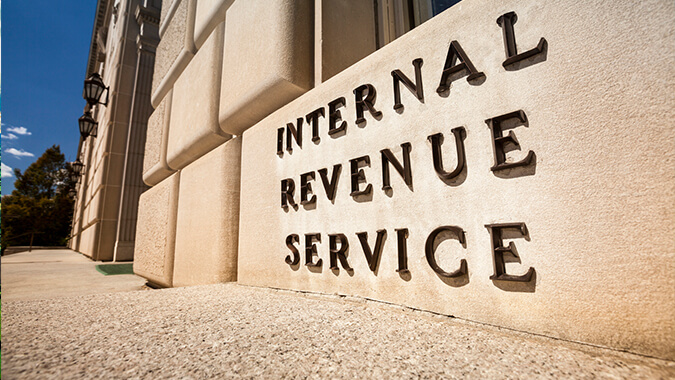Tax Accounting for Insurance Companies
- Published
- Nov 19, 2010
- Share
Agenda
- Tax Provision Background
- Steps of Tax Provision
- Permanent vs. Temporary Tax Adjustments
- Valuation Allowance vs. Admissibility Test
- 15% Second Admissibility Test (SSAP10R)
Tax Provision Background
Overview of ASC 740, ASC 740-10, SSAP 10R
ASC 740 General Overview
Issued in 1992.
ASC 740 (f/k/a FAS 109) applies to:
- Domestic federal (national) income taxes (U.S. federal income taxes for U.S. entities) and foreign, state, and local (including franchise) taxes based on income.
- An entity’s domestic and foreign operations that are consolidated, combined or accounted for by the equity method.
- Foreign entities preparing financial statements in accordance with U.S. GAAP.
- Non-public and Public entities.
Objectives of Accounting for Income Taxes under ASC 740:
- To recognize the amount of taxes payable or refundable for the current year.
- To recognize deferred tax assets (“DTA”) and liabilities (“DTL”) for future tax consequences of events that have been recognized in an entity’s tax returns or financial statements.
The Tax Provision Formula
| Current income tax based on corporate tax return | +/- | Change in the DTA or DTL from the beginning to end of the period | = | Total income tax expense or benefit |
Basic Principles of ASC 740
Current Portion of Taxes
Payable (Liability)
Prepaid/Refund (Asset)
Future Portion of Taxes
Deferred Tax Liability
Deferred Tax Asset
Profit and Loss Accounts
Current Expense/Benefit
Deferred Expense/Benefit
ASC 740 Computations
Computation of Income Tax Provision
- Identify permanent and temporary differences
- Compute current income tax payable or receivable
- Calculate tax provision to tax return true up
- Analyze deferred taxes and compute deferred income tax expense or benefit
- Analyze need for ASC 740-10 reserves
- Analyze need for ASC 740 valuation allowance
- Compute total income tax provision
- Reconcile income tax accounts
- Prepare rate reconciliation
- Prepare financial statement disclosures
ASC 740 General Overview, Continued
The following basic principles are applied for income tax purposes at the date of the financial statements:
- A current tax liability is recognized for current year estimated tax liability
- A deferred tax asset/liability is recognized for future year estimated tax effects related to temporary differences
- Measurement is based on provisions of enacted tax laws.
- Deferred tax assets are reduced by the amount of any tax benefits that are not expected to be realized.
Effective for all fiscal years beginning after December 15, 2006
ASC 740-10 (formerly FIN 48) consists of two main points:
- A tax benefit/expense may be reflected in the F/S only if it is “more likely than not” that the company will be able to sustain the uncertain tax positions based on its technical merits
- A tax benefit/expense should be measured as the largest amount of benefit/expense that is cumulatively greater than 50% likely to be realized
SSAP 10R – Statutory Tax Provision
Effective 2009, 2010.
- Temporarily approved in order to provide some relief to insurance companies that have suffered a reduction in their surplus due to the current economic conditions
What’s new?
- Similar to FAS 109, a statutory valuation allowance should be considered
- Risk Based Capital (RBC) requirements may limit additional availability
What changed?
- Additional 15% of Admitted DTA (Optional)
- Admissibility test is increases the loss carry back allowance from 1 year to 3 years
AP 10 vs. SSAP 10R
| Description | SSAP 10 | SSAP 10R |
| Valuation allowance | No | Yes, more likely than not criteria |
| Reversal period for timing differences | 1 year | 3 Years |
| Capital & Surplus limit | 10% | 15% |
| Additional DTA’s dependent on RBC Result (TAC/ACL) | N/A | Yes, have to pass trend test of 300% for P&C Co. & 250% for Life Co. |
| Recognition of Additional DTA’s | N/A | Optional |
SSAP 10R
- Adopts ASC 740 with the following modifications:
- State income taxes - included as “taxes, licenses and fees”. No deferred state income taxes are provided.
- Changes in DTA’s and DTL’s - are recognized as a separate component of gains and losses in surplus, except to the extent allocated to changes in unrealized gains and losses.
Steps of Tax Provision
Four Steps to the Tax Provision Process
- Current federal income tax expense
(Annual Statement page 4, income statement) - Deferred federal income tax expense
(Annual Statement page 4, surplus) - Gross deferred tax asset/liability
(Annual Statement page 2, column 1/ page 3) - Nonadmitted deferred tax asset
(Annual Statement page 2, column 2 and page 13, change in nonadmitted)
Current Taxes
Current Income Taxes are defined as:
- Current year estimates of federal and foreign income taxes based on tax returns for the current year, and tax contingencies for current and all prior years to the extent not previously provided, computed in accordance with SSAP No. 5
- Amount incurred or received during the current year relating to prior periods, to the extent not previously provided, as such amounts are deemed to be changes in accounting estimates as defined in SSAP No. 3
Deferred Taxes
- Usually deferred income taxes result when temporary differences exist between total income recorded on a company’s balance sheet and the amount of income the company must pay on taxes for a particular period
- Classified as either deferred income tax assets (DTAs) or deferred income tax liabilities (DTLs)
Permanent and Temporary Items / Adjustments
Permanent Items
- Tax-Exempt Income
- Dividends Received Deduction
- Meals & Entertainment
- Fines & Penalties
- Lobbying Expenses/ Dues
Temporary Items
Ordinary Investments
- Bond Discount Adjustments
- Change in Accrued Discounts
Capital Investments
- Other Than Temporary Impairments (“OTTI”)
- Sale of Discount Bonds
- Original Issue Discount (“OID”)
Other Ordinary Temporary Adjustments
- Loss Reserve Discounting (“LRD”)
- Unearned Premium Reserve (“UPR”)
- Guarantee Fund Assessments
- Nondeductible Premium Deficiency Reserves
- Depreciation
- Goodwill Amortization
- Accrued Expense and Compensation
Additional Temporary Deferred Items
- Unrealized Gain (Loss)
- Non-admitted Assets
DTA’s and DTL’s
| Item | Recorded Now | Recorded Later | Reported As | Example |
| Income | Books | Tax Return | DTL | Accrued Dividends |
| Income | Tax Return | Books | DTA | 20% of unearned premiums |
| Expense | Books | Tax Return | DTA | Unpaid loss and LAE discounting |
| Expense | Tax Return | Books | DTL | Tax/Book Depreciation |
Valuation Allowance vs. Admissibility Test
Valuation Allowance
- Required as part of admissibility test – not reported in the financials
- Temporary differences are evaluated for realizability using "more likely than not criteria"
- Applies to all temporary differences not just those used in second admissibility test
First Admissibility Test
- One year of temporary difference reversals
- Three components of admitted DTAs
- Recovery of taxes paid
- Future tax benefit in reversal period
- Calculate total benefit of future reversals
- Subtract the benefit based on taxes paid
- Net remaining benefit limited to 10% capital & surplus
- Amount offset against existing DTLs
15% Second Admissibility Test (SSAP10R)
Eligibility of Second Admissibility
- Must be subject to Risk Based Capital (“RBC”) filing requirements
- If subject to RBC trend test — must pass
- Ratio of Total Adjusted Capital (TAC) divided by Authorized control level RBC (ACL) is between 200% and 300%
- Combined ratio is less than 120%
- If not subject to RBC trend test — minimum RBC
- P & C Companies = TAC 300% or greater than ACL
- Life companies = 250% or greater
Steps of Second Admissibility Test
- Three years of temporary difference reversals
- Three components of admitted DTAs
- Recovery of taxes paid
- Future tax benefit in reversal period
- Calculate total benefit of future reversals
- Subtract the benefit based on taxes paid
- Net remaining benefit is limited to 15% capital & surplus
- Amount offset by existing DTLs
Contact: Paul Dougherty
EisnerAmper is an independent member firm of PKF International Limited
Any tax advice in this communication is not intended or written by EisnerAmper to be used, and cannot be used, by a client or any other person or entity for purposes of (i) avoiding penalties that may be imposed on any taxpayer or (ii) promoting, marketing or recommending to another party any matters addressed herein.
All information provided is of general nature and is not intended to address the circumstances of any particular individual or entity. Although we endeavor to provide accurate and timely information, there can be no guarantee that such information is accurate as of the date it is received or that it will continue to be accurate in the future. No one should act upon such information without appropriate professional advice after a thorough examination of the particular situation.
The material contained in this presentation is for general information and should not be acted upon without prior professional consultation.
Contact EisnerAmper
If you have any questions, we'd like to hear from you.
Receive the latest business insights, analysis, and perspectives from EisnerAmper professionals.









